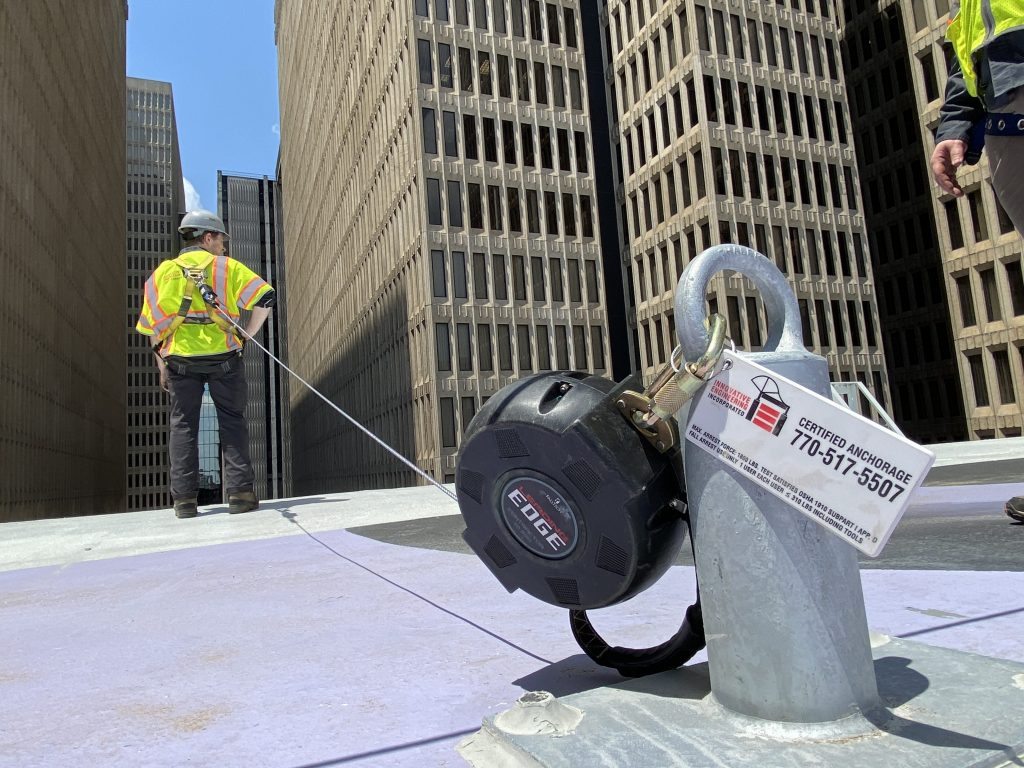
Did you know that a piece of façade falls off a building once every three weeks?
Unfortunately, it takes death or destruction to force local jurisdictions to enact façade ordinances. How can you avoid an accident at your property?
The façade is only one component of the building envelope, and is affected by other portions, like the roof. Roof inspections are vital and should never be neglected.
Many facilities often go year after year without a proper, comprehensive roof inspection. Managers may assume that the roof is sound and even ignore obvious issues, which will only proceed to become more and more severe.
Symptoms such as cracking, ponding water, and accumulated debris can indicate a significant problem. Regular, proper inspections of your roof can head off a more expensive repair in the future.
Common roof issues include:
- Organic growth: Weed and plant roots can actually penetrate into the roof, which can cause damage.
- Heat absorption: Components of the roof that have absorbed water will cool off more slowly. This leads to dusk being the best time to thermally examine a roof, as the “hot spots” have not cooled down as much as other areas.
- Ponding: The result of poor drainage, ponding is standing water that remains on a roof after 48 hours. The water can find its way into imperfections in the roof, and degrades the materials inside.
- Parapets: Can be a problematic source of water intrusion. Materials that have been exposed to moisture, sunlight, and UV exposure can crack and split, allowing water an easy path into the inside of the building envelope.
- Rusted supports: Can contribute to damage or falling pieces of your building envelope. Lightning strikes have been known to hit sensitive areas of a roof or facade and cause massive chunks to fall to the ground below.
Relative Costs of Different Roofing Materials
Most moisture problems in a building start at the roof, particularly where the roof meets the wall and penetrations. Good quality roofing is the key to keeping water out of your building and facades!
There is no best type of roof. Selecting the right materials depends on if you’re replacing or constructing a new roof, the condition of the roofing, insulation, and deck, and other variables like climate, foot traffic, and wind exposure.
Average costs for quality materials (as of 2018) are:
- EDPM (Ethylene Propylene Diene Terpolymer, Synthetic Rubber, (innertube)): Thermosetting – hardens when heated. >15-year life span. $5.50 per square foot.
- PVC (polyvinyl chloride): >15-year life span. 3x thicker than EPDM and plastic single ply sheets. $8.50 per square foot.
- TPO (thermoplastic Olefin): Combination of thermoplastic, elastomer or rubber, and a filler. <15-year lifespan. $7.00 per square foot.
Use the IEI Advantage to Protect Your Roof
A roof inspection is recommended twice a year – primarily right before and after winter. However, if your roof is subject to severe weather such as a hailstorm or hurricane, it may be prudent to schedule an inspection to assess any potential damage that may have been caused.
Innovative Engineering Inc.’s Certified Remote Pilots comply with FAA Part 107 Guidelines. They also hold a daylight operations waiver which allows them to fly at night, which is the best time to conduct thermal inspection.
The engineers at IEI have extensive experience with various methods of roof inspection. If you feel that it is time to address any problems (either potential or already confirmed) with the roof of your facility, give IEI a call today. Their engineers will be happy to provide you with a detailed report of any deficiencies that need to be addressed. Contact us today!
